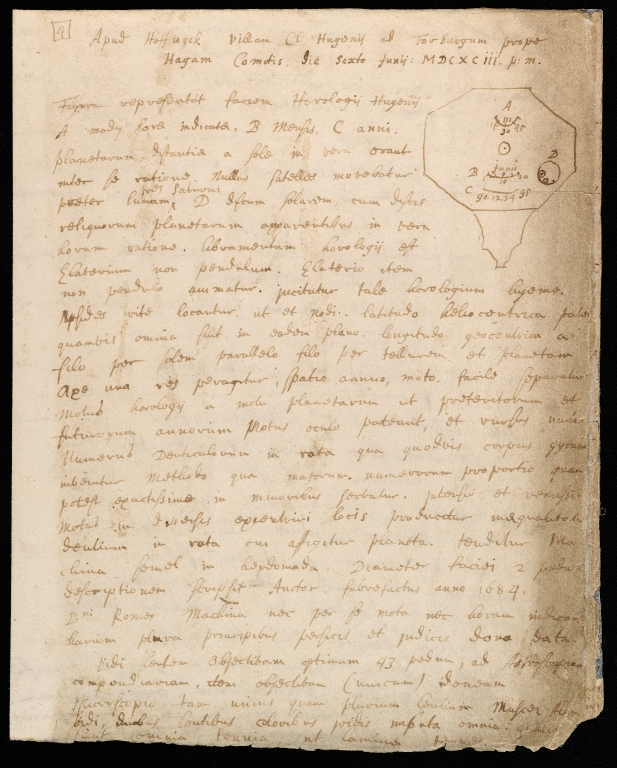Mathematics
Found in 23 Collections and/or Records:
Isaaci Newtoni tractatus de seriebus infinitis et convergentibus, c1685
Notes on Newton's 1671 tract on fluxions, copied out from John Craige. Their concluding section, on angular sections, is in English.
Jo: Keil Scheda de figura Radij in Medio difformi, 1684-1700
Mr Whistons mistakes in his new theory, 3 April 1698
Neutons Investigatio Curvae Celerrimi descensus, 1 April 1700
Newton's full solution of the brachistochrone problem. The original of this photostat is in the Royal Society, as Gr MS 122.
Nota ad pag: 221 Newtoni, May 1694
More tries to work out Newton's thoughts on the attraction of a spheroid.
Nota ad pag 221 Newtoni, May 1694
Yet more tries to work out Newton's thoughts on the attraction of a spheroid.
Nota ad pag: 468 Newtoni, May 1694
Gregory tries to work out how Newton's lemma 1 to book 3 in the Principia derives the ratio of forces acting on the earth and thence the precession of the equinoxes. He wonders if Newton, who in the interest of brevity disliked showing his work, knows a shorter way to do this.
Notanda D.J. phys. et math. Lond: Martio 1693 cum Fatio, 31 March 1693

Observata et dicta apud D. Hugenium, 06 June 1693
Notes of a conversation in Holland with Christian Huygens, concerning an 'horologium' to show hours, months, years, and planetary positions. More general mention of the work of numerous other scientists: Notably, Huygens disputes the notion of John Bernoulli (James Bernoulli's younger brother) that the curve of an inflated sail is part-catenary and part-circle, and warns that Newton ought not to be 'deflected' into theology or chemistry.
Oratio de Quadr: Lunale Hypocratis, 1690
Graduation speech, in Gregory's hand, of one Laurence Oliphant. This young man may have been Gregory's future brother-in-law.
The subject is Hyppocrates' lunula. Two documents on the same subject come before this, no doubt as supporting notes. One is the draft of a letter from Gregory to Wallis, referring to a 1687 article by Tchirnhausen in the Leipzig Acta, the other, a transcript of that article.

